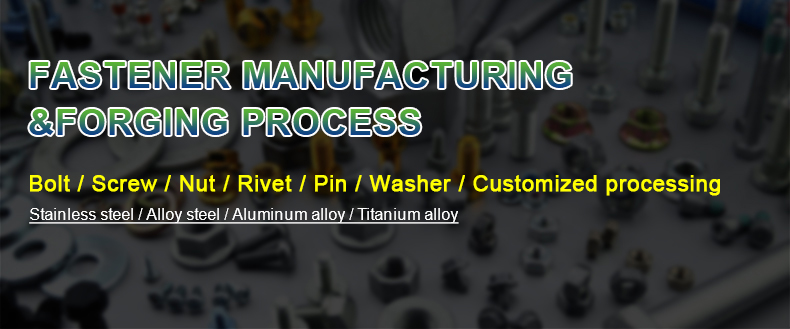
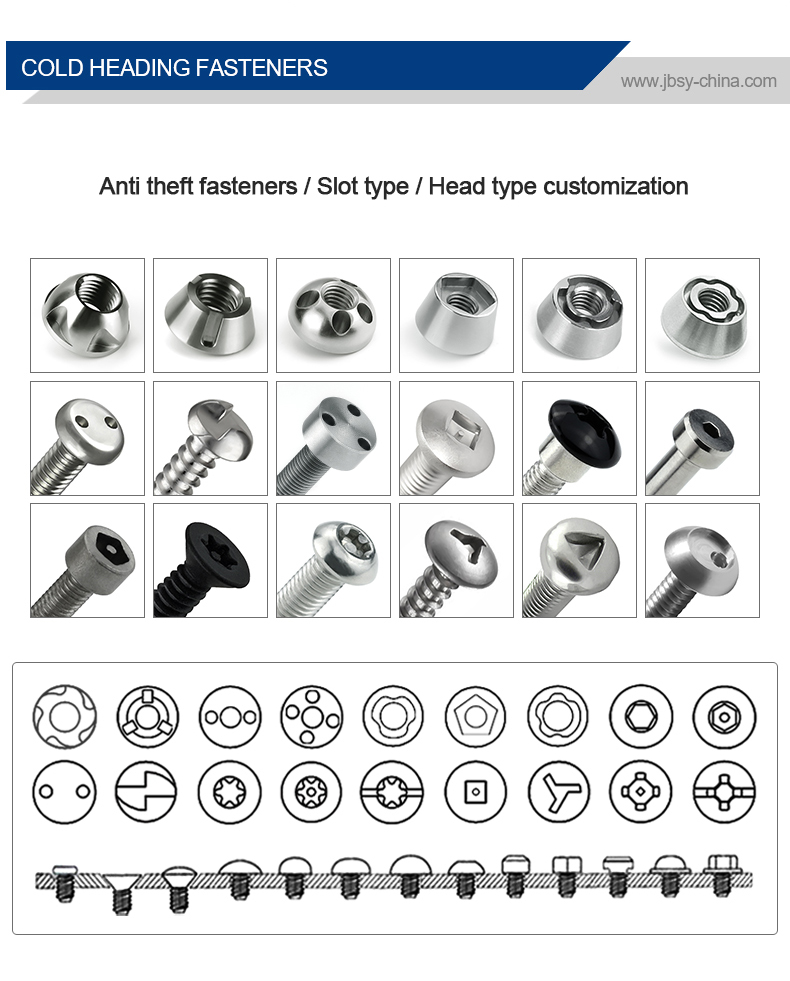
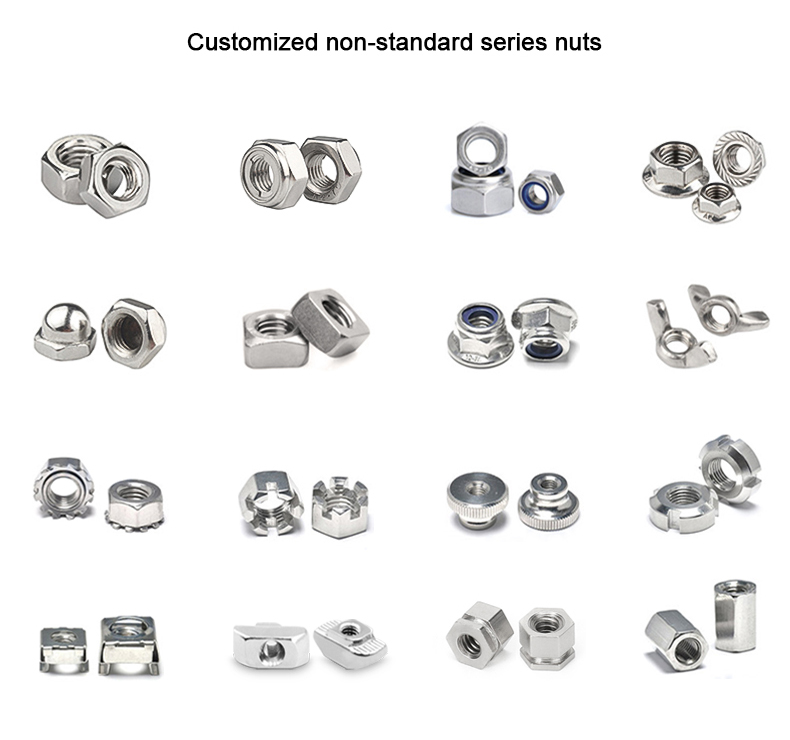
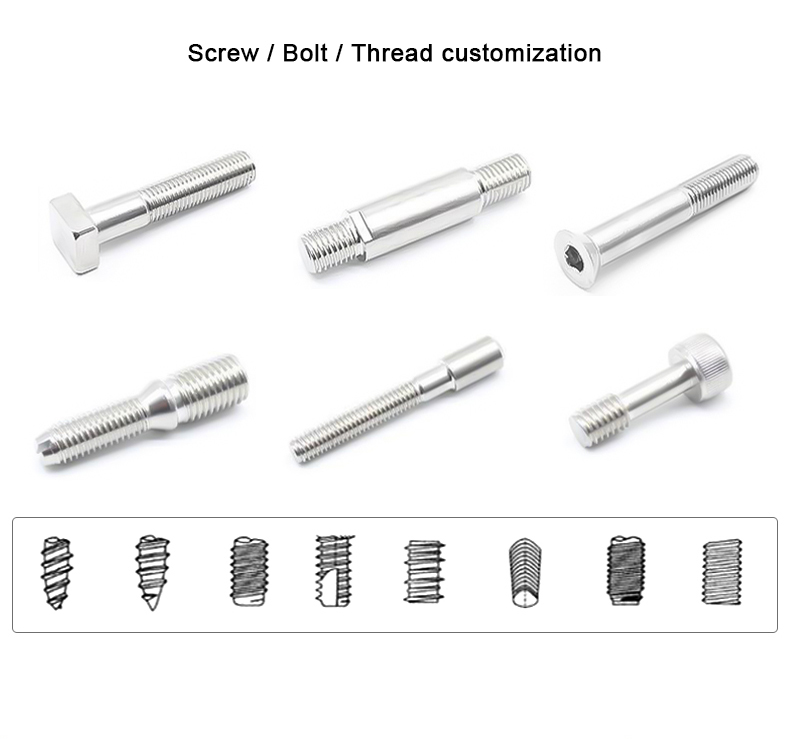
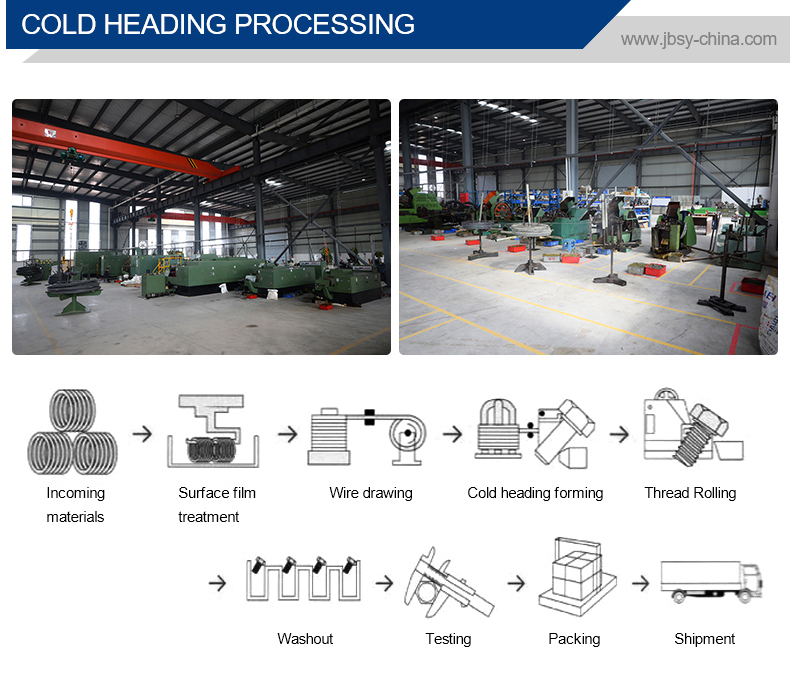
عملية الرأس على البارد هي واحدة من العمليات الجديدة للتشغيل الآلي بالضغط ذات القطع الأقل أو بدون قطع
المعدن. وهي طريقة معالجة تستخدم التشوه البلاستيكي للمعدن تحت تأثير
قوى خارجية، وبمساعدة القوالب، تقوم بإعادة توزيع ونقل حجم المعدن لتشكيل
الأجزاء أو الفراغات المطلوبة. عملية الخراطة على البارد هي الأكثر ملاءمة لإنتاج الأجزاء القياسية
أدوات التثبيت مثل البراغي والبراغي والصواميل والمسامير والمسامير والدبابيس وغيرها
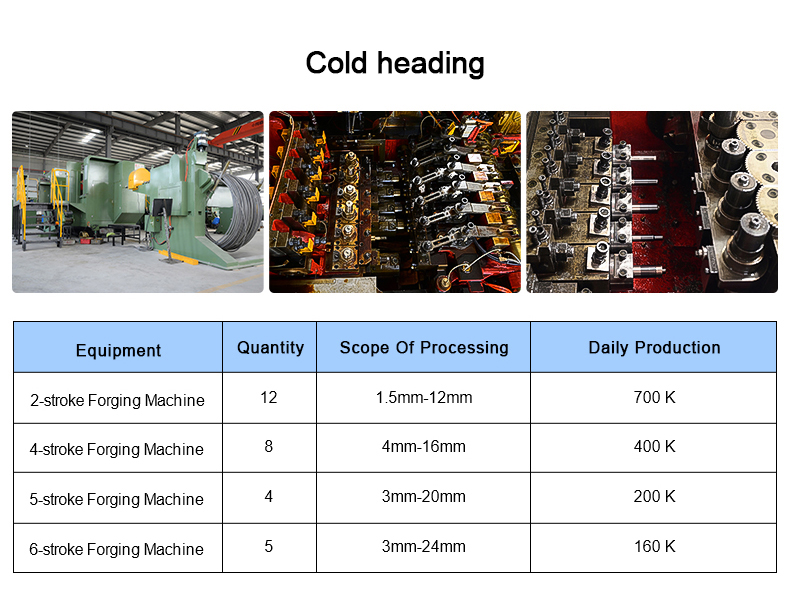
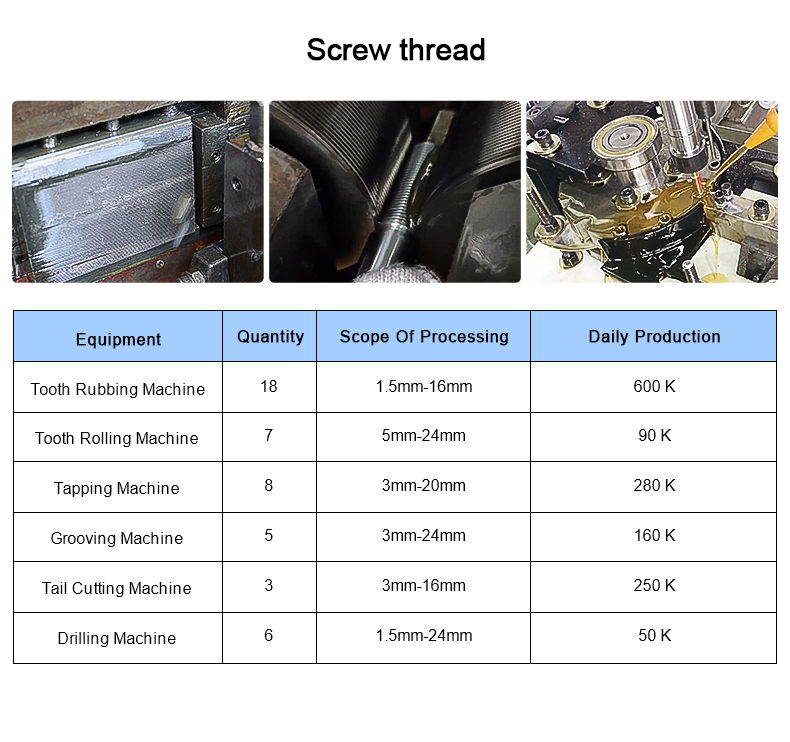
مسامير أسلاك الأمانتُعرف أيضًا باسم مسامير القفل السلكية أو مسامير الرأس المثقوبة، وهي عبارة عن مثبتات متخصصة مصممة ليتم تثبيتها بسلك أمان (سلك قفل) لمنع الارتخاء بسبب الاهتزاز أو الدوران. تستخدم هذه البراغي بشكل شائع في صناعة الطيران والسيارات ورياضة السيارات وغيرها من التطبيقات عالية الأداء حيث تكون الموثوقية أمرًا بالغ الأهمية.
طلاء البراغي لمسامير أسلاك الأمان:
يتم تطبيق الطلاء على مسامير الأسلاك الآمنة لتعزيز مقاومة التآكل، وتقليل الاحتكاك، وتحسين المظهر، وأحيانًا لتلبية متطلبات توصيل أو متطلبات حرارية محددة. تشمل خيارات الطلاء الشائعة ما يلي:
1. طلاء الكادميوم (Cad)
-
الخصائص: مقاومة ممتازة للتآكل، ومقاومة ممتازة للتشحيم، وحماية جيدة من التآكل، وحماية من التضحية.
-
المظهر: فضي مصفر مائل للصفرة.
-
الاستخدام الشائع: التطبيقات الفضائية والعسكرية (على الرغم من التخلص التدريجي منها بسبب المخاوف البيئية).
-
القيود: سامة، مقيدة بموجب لوائح RoHS وREACH.
2. الطلاء بالزنك (Zn)
-
الخصائص: مقاومة جيدة للتآكل، وفعالة من حيث التكلفة.
- الاستخدام الشائع: تطبيقات السيارات، والصناعة، والأغراض العامة.
-
القيود: أقل متانة من الكادميوم في البيئات القاسية.
4. طلاء الكروم (Cr)
-
الخصائص: صلبة للغاية، ومقاومة ممتازة للتآكل، وزخرفية.
-
المظهر: لمعان يشبه المرآة.
-
الاستخدام الشائع: المحركات عالية الأداء، والتطبيقات البحرية.
-
القيود: يمكن أن يكون هشاً وعرضة للتشقق.
- طلاء سلك الأمان السلكي
اعتبارات الاختيار:
-
البيئة: قد تتطلب التطبيقات البحرية أو عالية الرطوبة استخدام الكادميوم أو النيكل.
-
اللوائح: الكادميوم مقيد في العديد من الصناعات، ويفضل استخدام بدائل مثل الزنك والنيكل.
-
درجة الحرارة: يتعامل النيكل والكروم مع الحرارة العالية بشكل أفضل من الزنك.
-
الجماليات: يوفر الكروم والنيكل مظهراً مصقولاً، بينما يوفر الأكسيد الأسود أو الزنك مظهراً غير لامع.
الخلاصة:
يعتمد اختيار الطلاء لمسامير أسلاك الأمان على المتطلبات الميكانيكية والبيئية والتنظيمية للتطبيق. غالبًا ما يستخدم الفضاء الجوي الكادميوم أو الزنك والنيكل، بينما قد تختار تطبيقات السيارات والتطبيقات الصناعية طلاء الزنك أو الفوسفات. تحقق دائمًا من معايير الصناعة (على سبيل المثال، ASTM، MIL-SPEC) عند اختيار الطلاء للتطبيقات الحرجة.


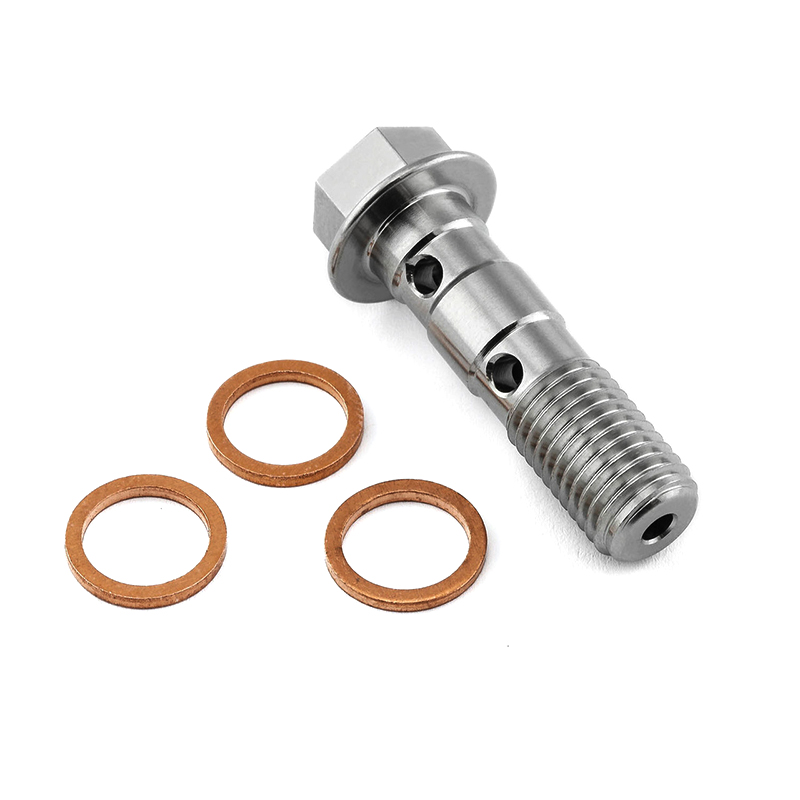
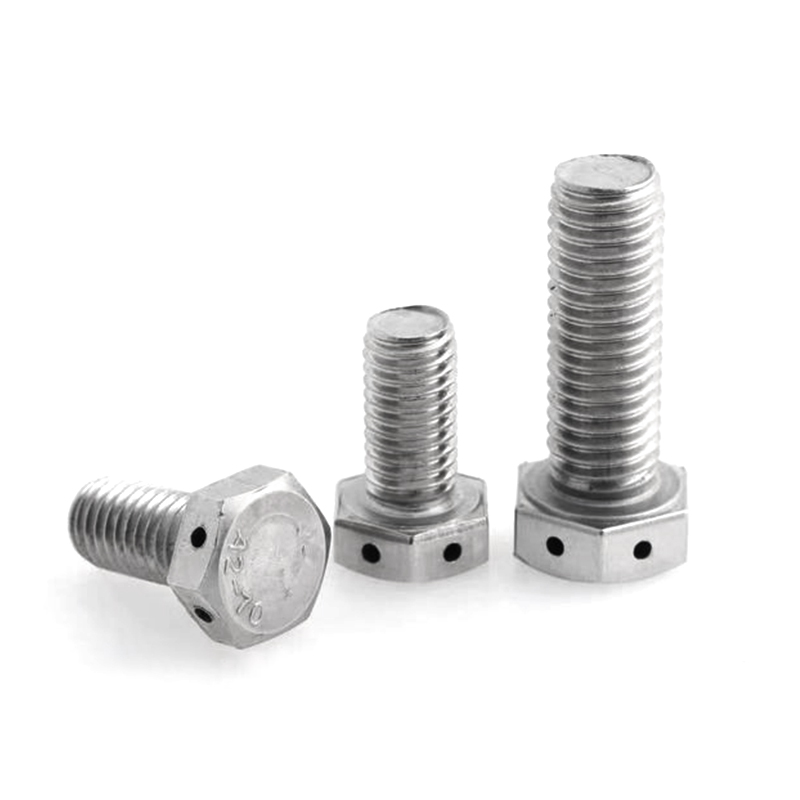
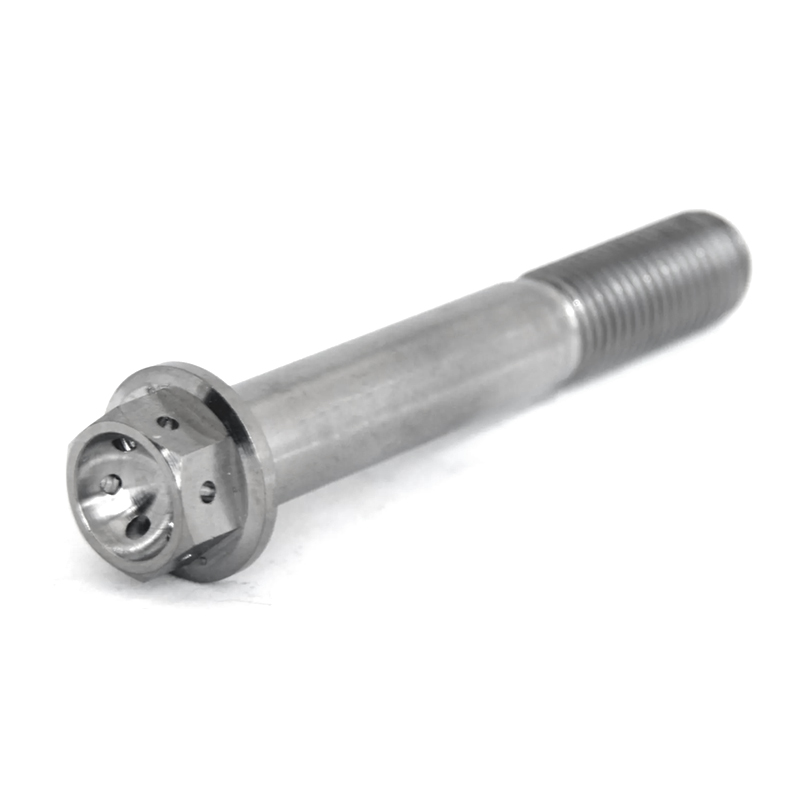
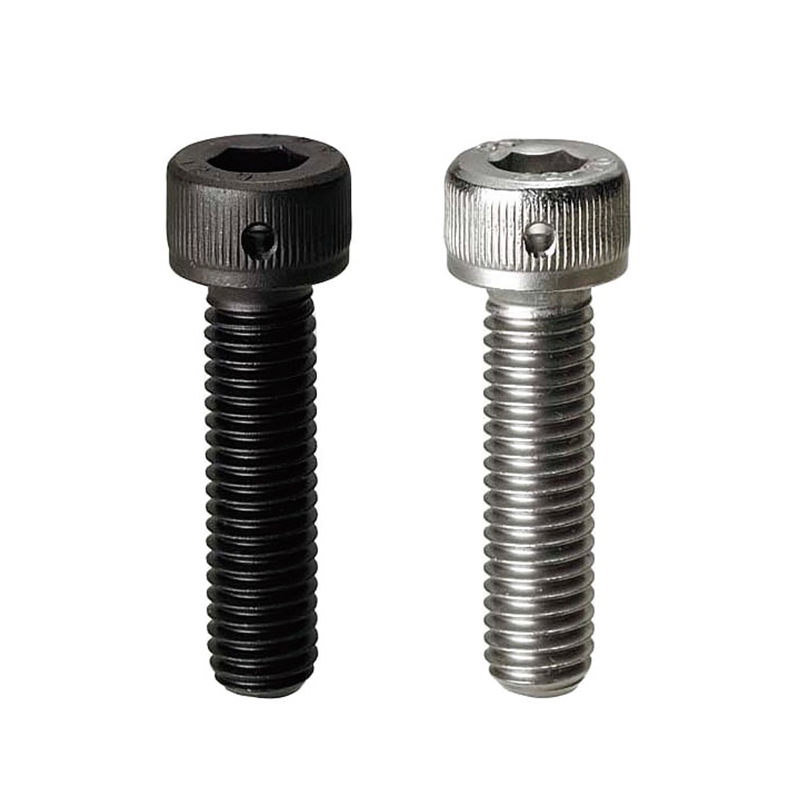

المراجعات
لا توجد مراجعات بعد.